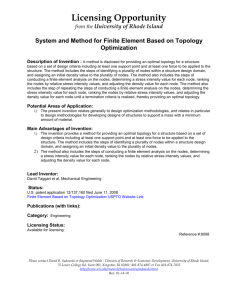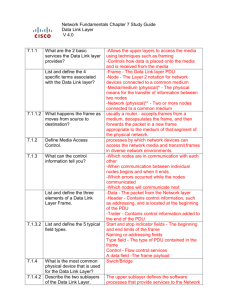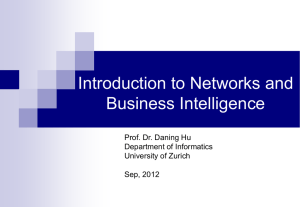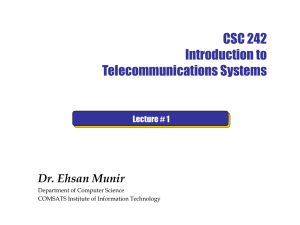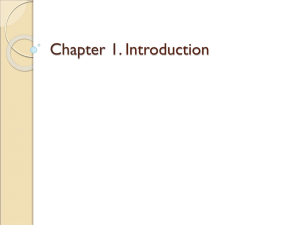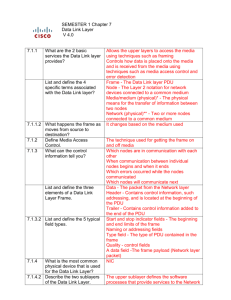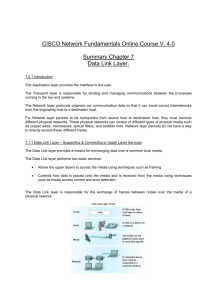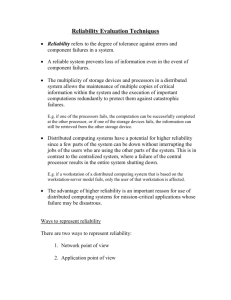poster - Parasol Laboratory, Department of Computer Science
advertisement
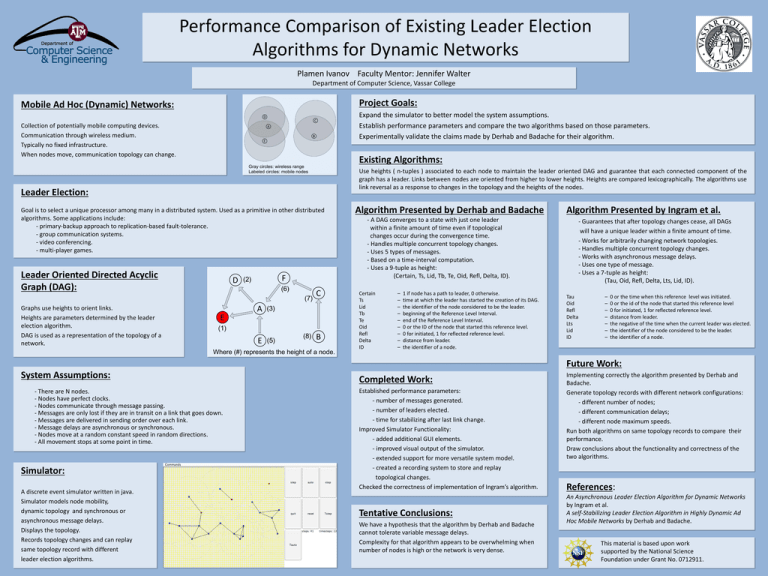
Performance Comparison of Existing Leader Election Algorithms for Dynamic Networks Plamen Ivanov Faculty Mentor: Jennifer Walter Department of Computer Science, Vassar College Mobile Ad Hoc (Dynamic) Networks: Collection of potentially mobile computing devices. Communication through wireless medium. Typically no fixed infrastructure. When nodes move, communication topology can change. Leader Election: Goal is to select a unique processor among many in a distributed system. Used as a primitive in other distributed algorithms. Some applications include: - primary-backup approach to replication-based fault-tolerance. - group communication systems. - video conferencing. - multi-player games. Leader Oriented Directed Acyclic Graph (DAG): Graphs use heights to orient links. Heights are parameters determined by the leader election algorithm. DAG is used as a representation of the topology of a network. Project Goals: Expand the simulator to better model the system assumptions. Establish performance parameters and compare the two algorithms based on those parameters. Experimentally validate the claims made by Derhab and Badache for their algorithm. Existing Algorithms: Use heights ( n-tuples ) associated to each node to maintain the leader oriented DAG and guarantee that each connected component of the graph has a leader. Links between nodes are oriented from higher to lower heights. Heights are compared lexicographically. The algorithms use link reversal as a response to changes in the topology and the heights of the nodes. Algorithm Presented by Derhab and Badache Algorithm Presented by Ingram et al. - A DAG converges to a state with just one leader within a finite amount of time even if topological changes occur during the convergence time. - Handles multiple concurrent topology changes. - Uses 5 types of messages. - Based on a time-interval computation. - Uses a 9-tuple as height: (Certain, Ts, Lid, Tb, Te, Oid, Refl, Delta, ID). Certain Ts Lid Tb Te Oid Refl Delta ID – – – – – – – – – 1 if node has a path to leader, 0 otherwise. time at which the leader has started the creation of its DAG. the identifier of the node considered to be the leader. beginning of the Reference Level Interval. end of the Reference Level Interval. 0 or the ID of the node that started this reference level. 0 for initiated, 1 for reflected reference level. distance from leader. the identifier of a node. - Guarantees that after topology changes cease, all DAGs will have a unique leader within a finite amount of time. - Works for arbitrarily changing network topologies. - Handles multiple concurrent topology changes. - Works with asynchronous message delays. - Uses one type of message. - Uses a 7-tuple as height: (Tau, Oid, Refl, Delta, Lts, Lid, ID). Tau Oid Refl Delta Lts Lid ID – – – – – – – 0 or the time when this reference level was initiated. 0 or the id of the node that started this reference level 0 for initiated, 1 for reflected reference level. distance from leader. the negative of the time when the current leader was elected. the identifier of the node considered to be the leader. the identifier of a node. Future Work: System Assumptions: - There are N nodes. - Nodes have perfect clocks. - Nodes communicate through message passing. - Messages are only lost if they are in transit on a link that goes down. - Messages are delivered in sending order over each link. - Message delays are asynchronous or synchronous. - Nodes move at a random constant speed in random directions. - All movement stops at some point in time. Simulator: A discrete event simulator written in java. Simulator models node mobility, dynamic topology and synchronous or asynchronous message delays. Displays the topology. Records topology changes and can replay same topology record with different leader election algorithms. Completed Work: Established performance parameters: - number of messages generated. - number of leaders elected. - time for stabilizing after last link change. Improved Simulator Functionality: - added additional GUI elements. - improved visual output of the simulator. - extended support for more versatile system model. - created a recording system to store and replay topological changes. Checked the correctness of implementation of Ingram’s algorithm. Tentative Conclusions: We have a hypothesis that the algorithm by Derhab and Badache cannot tolerate variable message delays. Complexity for that algorithm appears to be overwhelming when number of nodes is high or the network is very dense. Implementing correctly the algorithm presented by Derhab and Badache. Generate topology records with different network configurations: - different number of nodes; - different communication delays; - different node maximum speeds. Run both algorithms on same topology records to compare their performance. Draw conclusions about the functionality and correctness of the two algorithms. References: An Asynchronous Leader Election Algorithm for Dynamic Networks by Ingram et al. A self-Stabilizing Leader Election Algorithm in Highly Dynamic Ad Hoc Mobile Networks by Derhab and Badache. This material is based upon work supported by the National Science Foundation under Grant No. 0712911.
